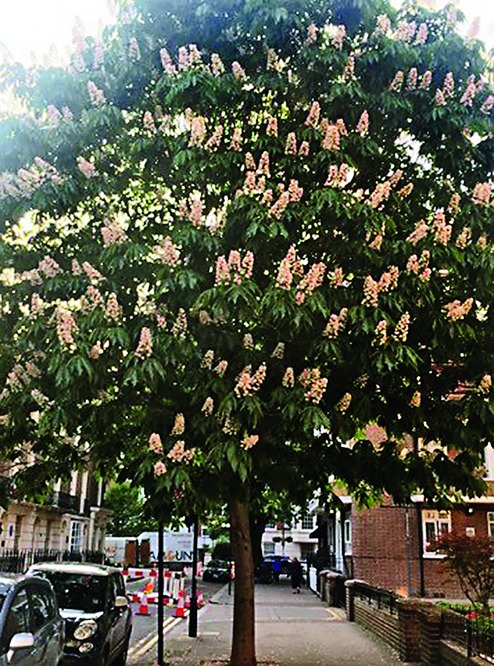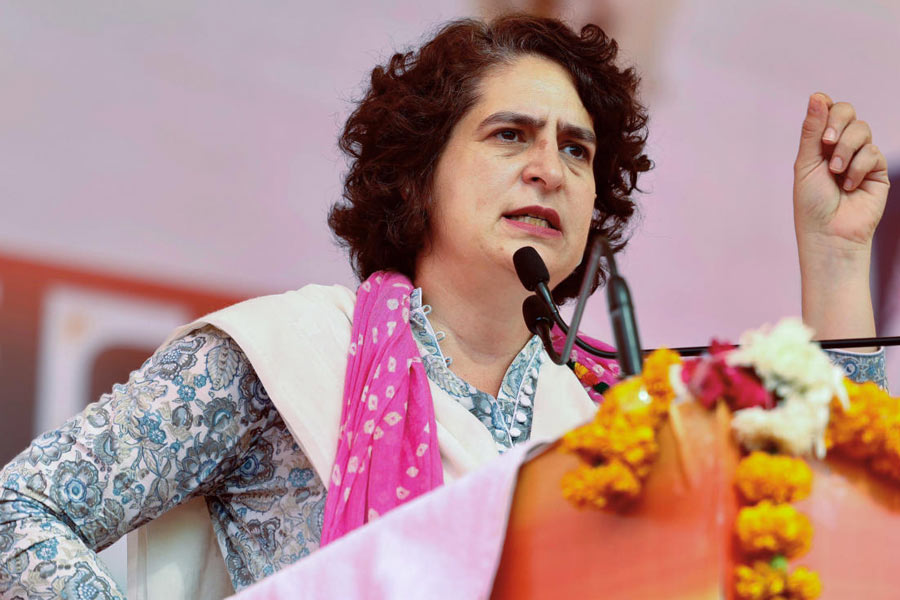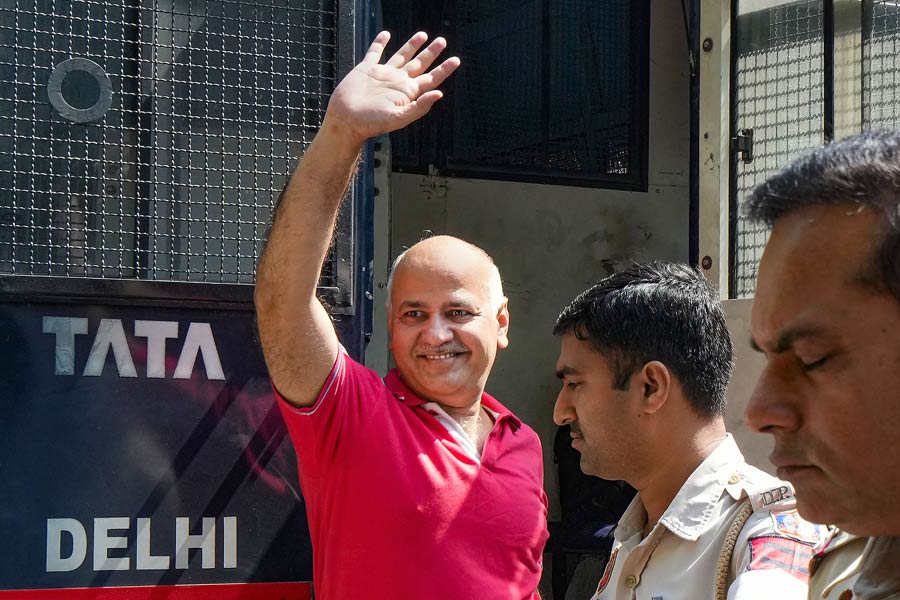Blame it on the timing, but for those who heard Arun Jaitley on the floor of the Lok Sabha last Thursday, the irony was unmistakable. Just a day before, on February 7, the prime minister had used the same forum to launch a blistering attack on the Congress. In his 90-minute-long speech, Narendra Modi held the Congress responsible for all the ills in the country since Independence. He accused the Grand Old Party of being a fount of corruption and listed a string of so-called scams related to the defence sector, involving guns (Bofors), submarines and army tanks. They were emblems of Old India, he said, while extolling the sterling virtues of the New India under his making.
It was left to Arun Jaitley the next day to address questions around a new defence deal that has been riddled in mystery. Instead of answering the questions raised by the Opposition and defence analysts, the finance minister decided to go on the offensive. Referring to the Rafale fighter jet agreement struck between India and France, Jaitley said that by questioning the secrecy surrounding the deal, the Opposition was 'seriously compromising India's security'.
Jaitley went on to cite responses from defence ministers of the previous United Progressive Alliance governments who, too, had refused to share details of defence purchases with Parliament on grounds of national security. Jaitley quoted a reply from the then defence minister, Pranab Mukherjee, to rub in the point, and asked the Congress president, Rahul Gandhi, to speak to Mukherjee first before raising questions. Giving a break-up of armament purchase deals can divulge the kind of weapons a country has and can let the 'enemy' know about the type of weapons and capacity available in India, Jaitley added with a touch of theatrical flourish.
That Jaitley should serve up examples from the UPA regime to fend off awkward questions facing shining New India was more than a little ironic. For Modi the day before, nothing the Congress and its allies had done was right. And his mission was to do things differently. Transparency in defence deals involving thousands of crores of rupees, one would imagine, would be central to his promise of a corruption-free India. But here was Jaitley telling us otherwise: citing UPA-era secrecy to justify Modi-era opacity, with an added rider that if you dared question anything, you would be rewarded with the regime's favourite epithet: anti-national.
If Jaitley was on a slippery slope by invoking past precedents, it got worse when an uncharacteristically combative Congress countered him strongly. On Thursday itself, the Congress president, Rahul Gandhi, who has been taking up the Rafale issue regularly, wanted to speak but Jaitley refused to yield the floor to him. Undeterred, Rahul took to Twitter to nail 'Mr Jaitlie's' lies. The UPA, he wrote, had released prices of defence purchases to Parliament and attached replies related to: a) the purchase of aircraft carrier, ex-Admiral Gorshkov; b) the purchase of 42 Sukhoi aircraft; c) the upgradation costs of Mirage 2000. 'Now do ask our Raksha Mantri to tell India how much each Rafale jet cost,' Rahul said.
One reason why the Modi government has escaped scrutiny over the deal is that for most people, and much of the media included, defence matters tend to seem more complex than rocket science. The bogey of 'national security' deepens the shroud of silence on these matters. Yet, the questions are fairly simple and the government's refusal to answer them or give contrary answers is what makes the whole issue more than a little curious.
The Rafale deal has a long history. In view of the Indian Air Force's demand for more fighter jets, the UPA government had floated a tender for the purchase of 126 twin-engine 'Medium Multi-Role Combat Aircrafts' back in 2007. Top aviation companies from around the world bid for the contract and the French company, Dassault Aviation, won the contract with Rafale. The agreement between Dassault and the government of India was finalized towards the end of 2012. As per that agreement, 18 planes were to be imported in 'fly away condition' and the remaining 108 would be manufactured by the public sector company, Hindustan Aeronautics Limited. Although the price of the aircrafts was not officially released, defence correspondents and experts were reliably told that the deal was struck at a base price of approximately Rs 54,000 crore at the 2012 conversion rate.
Before the deal could get off the ground (HAL and Dassault Aviation signed a workshare agreement in March 2014), the UPA was defeated and the Modi government swept to power. A year later, during his first visit to France in April 2015, Modi made a sudden announcement which took everyone by surprise. Modi announced that India would buy 36 Rafale aircrafts in 'fly-away' condition. In July 2015, the earlier agreement with Dassault for 126 fighter jets was cancelled and HAL was no longer in the picture. A year later, on September 23, 2016, the Modi government signed a fresh deal with the company for 36 Rafale jets. Again, the price was not officially set down on paper but the defence cognoscenti were given to understand that the whole deal would cost around Rs 59,000 crore. In a written reply to the Lok Sabha in November 2016, the minister of state for defence, Subhash Bhamre, said the 'cost of each Rafale aircraft is around Rs 670 crore.' This is the basic price minus the add-ons and weapons systems.
But after that brief reply, the government has gone silent on the cost of the deal. As the questions have got louder, the official silence has become deeper. The Opposition's criticisms of the new Rafale deal are on multiple counts. These include the manner in which the prime minister bypassed the defence procurement procedure to take a unilateral decision to buy 36 jets; the cutting out of HAL from the deal and instead allowing Dassault Aviation to reach an agreement with a new private company - the Anil Ambani-owned Reliance Defence Limited - for the maintenance of the aircraft and future partnership; and the far higher price being paid for the jets today than when contracted by the UPA government.
At a press conference in November 2017, the Union defence minister, Nirmala Sitharaman, forcefully denied the Congress's allegations that the 36 jets were now being bought for around Rs 59,000 crore while the UPA had contracted 126 jets (with the provision for transfer of technology) for Rs 54,000 crore. Even accounting for inflation, change of exchange rates and the 'add ons', the new deal works out to be hugely more expensive. The government's claim that the jets were needed urgently also seems specious since they are not expected to join the IAF fleet till 2022.
While defence officials maintain that the two prices cannot be compared, Nirmala Sitharaman went a step further to claim that 'we have obtained a far better deal per aircraft (than the UPA).' That answer led journalists to ask her to reveal the price. Sitharaman, with the usual bluster that is encouraged in the Modi regime, said, 'I am not shying away from giving figures,' and asked the defence secretary to give the details.
But there has been no word on it since. Instead, the defence ministry issued a statement last week citing the 'confidentiality provisions of a bilateral India-France Agreement of 2008 signed by the previous government.' That agreement, defence journalists have pointed out, was to remain in force for a period of 10 years which ended on January 24, 2018. As per a clause of the agreement, 'It shall be renewed by tacit consent for a new five-year period unless one of the Parties notifies the other Party of its intention not to renew it in writing six months prior to the end of its current period of validity.'
The government has not clarified whether it has renewed a UPA-era agreement 'by tacit consent' even if it could have ended it in the interests of greater transparency. That is only one of the many unanswered questions that make India's biggest defence deal so opaque and intriguing.











